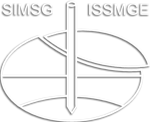Dynamic centrifuge modelling of the seismic deformation response in level ground and its evaluation
Dynamic centrifuge modelling of the seismic deformation response in level ground and its evaluation
The earthquake-induced deformation response of the level ground could be classified into two types: Type A, observed for non-liquefaction events, and Type B, observed after liquefaction triggering. Reliable evaluation of dynamic and post-earthquake deformations of grounds under condition of Type A is crucial for the performance-based design of foundations and geotechnical infrastructures. In this study, a series of cyclic triaxial tests were conducted to establish a correlation between the safety factor of liquefaction and the peak excess pore pressure ratio of saturated sand. An empirical model for residual excess pore pressure is also proposed to evaluate the degradation of shear modulus and compression modulus of soil elements, which are subsequently utilized to estimate the dynamic shear strain during shaking and the post-earthquake volumetric strain. Consequently, the dynamic deformation and post-earthquake settlement of a level ground could be evaluated by the safety factor of liquefaction. Then a dynamic centrifuge model test of saturated level ground was conducted and the deformation response of the model ground was carefully observed. By comparing the predicted deformations with the observations in the model test, the applicability of the proposed method was preliminarily validated.
Dong-Chao Zhang; Yan-Guo Zhou; Bo-Zheng Sun; Yunmin Chen
5th European Conference on Physical Modelling in Geotechnics (ECPMG2024)
Geotechnical infrastructure
https://doi.org/10.53243/ECPMG2024-100
